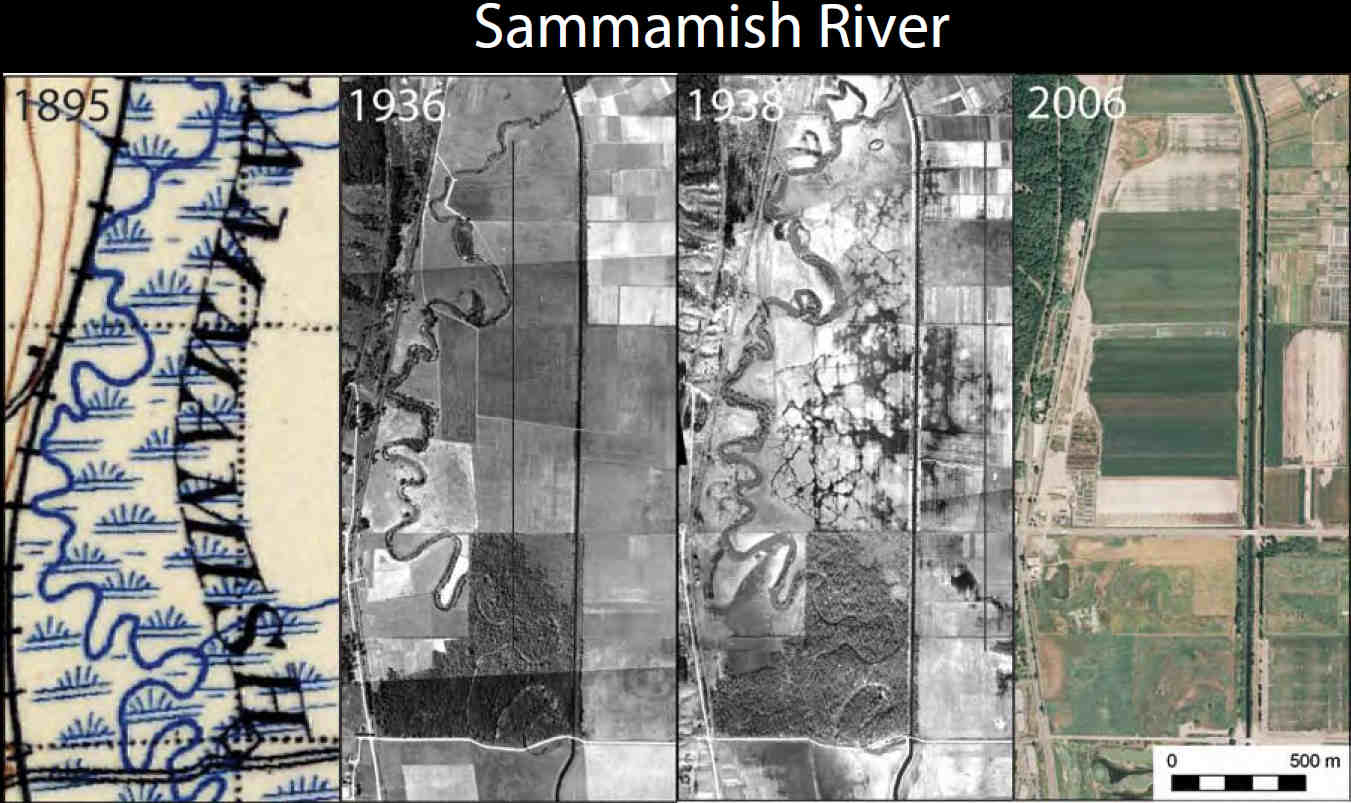
Sammamish River Dredging Changes
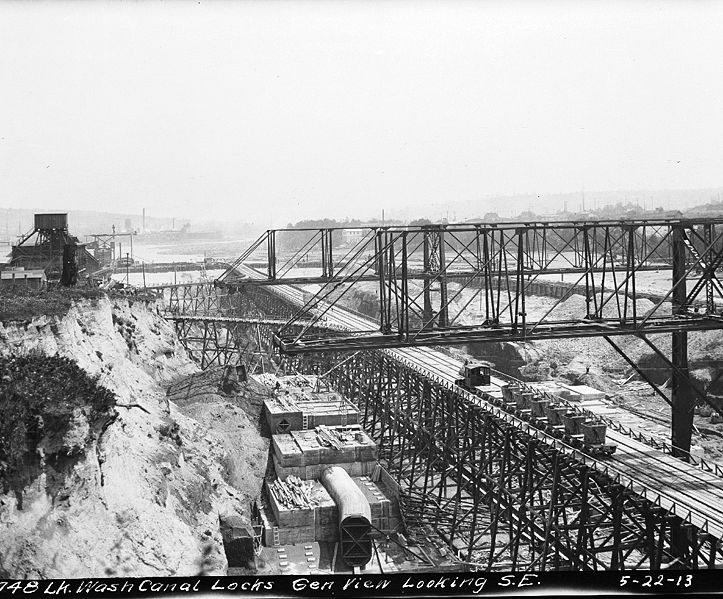
1913 Ballard Locks Construction
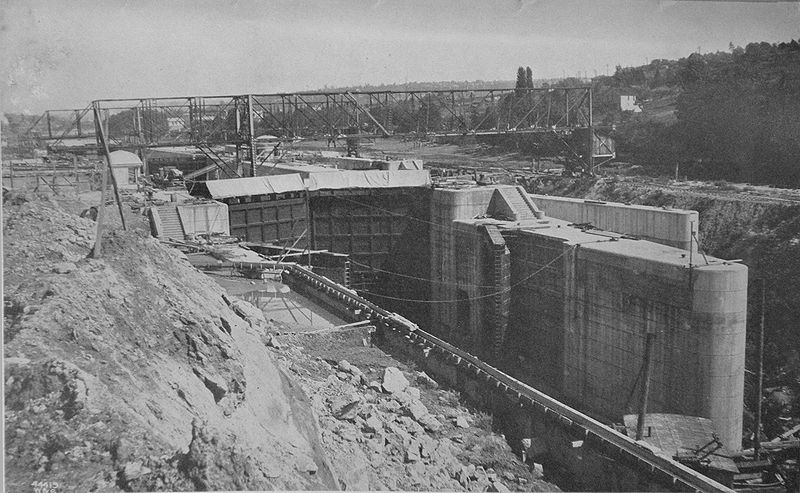
1915 Ballard Locks Construction
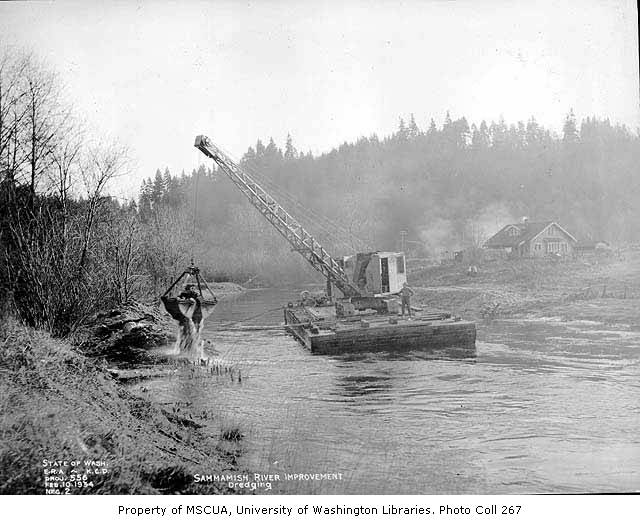
Sammamish River Dredging 1934
Ballard Locks
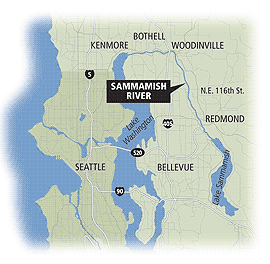
Sammamish River Flow
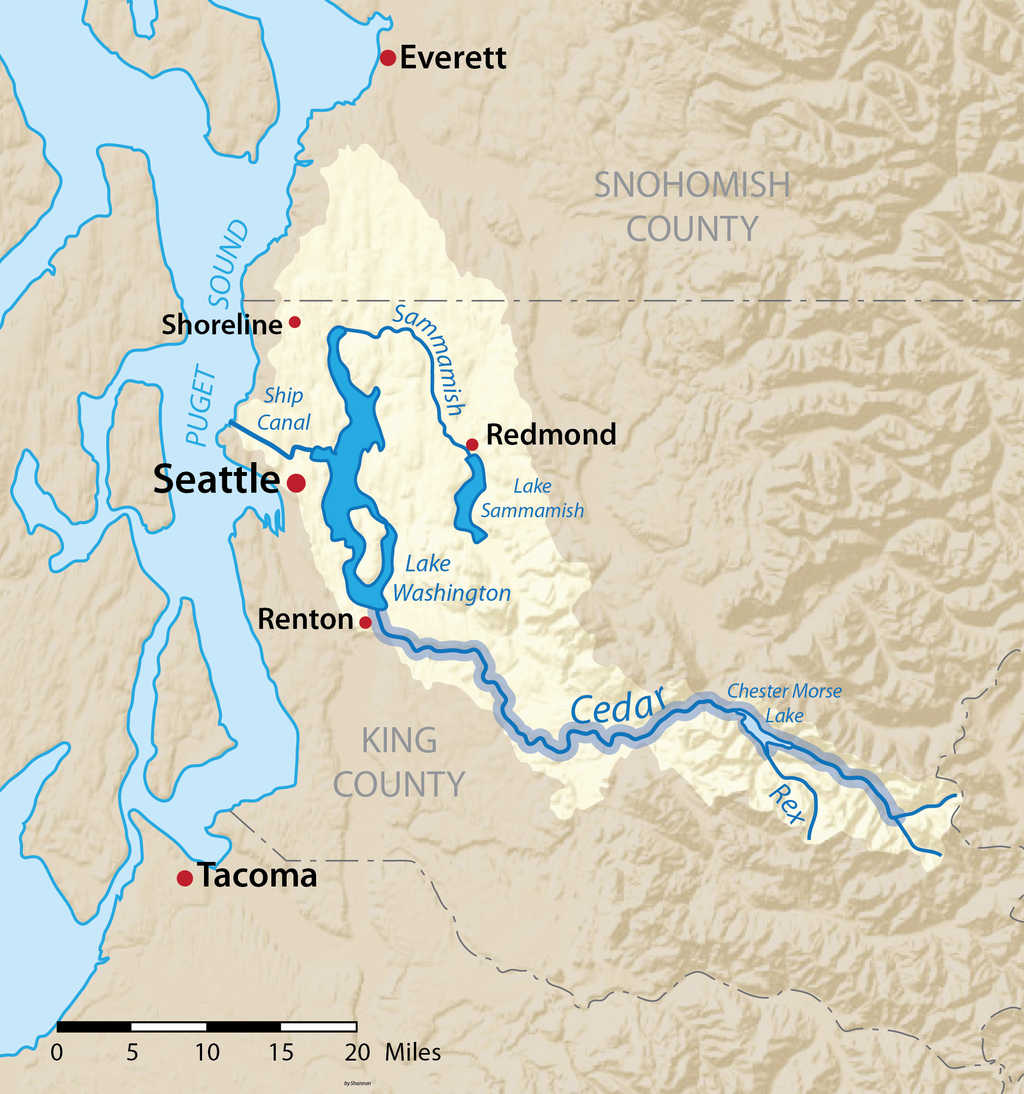
Cedar River Flow
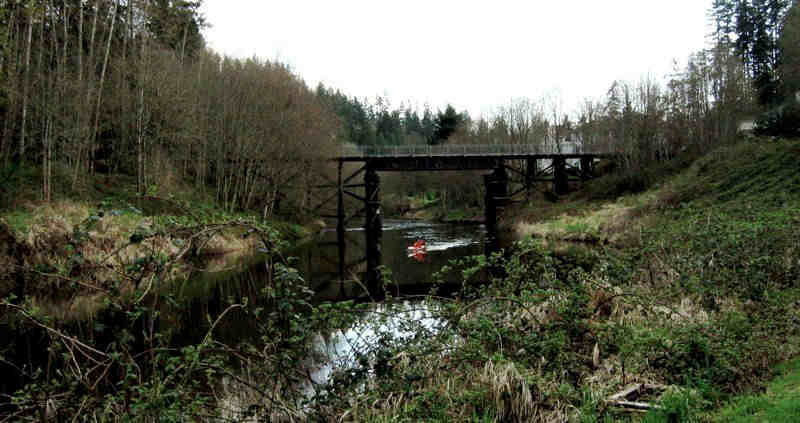
Sammamish River Bothell
The Sammamish River drains Lake Sammamish contributing 27 percent of the water inflow to Lake Washington. Before the Cedar River was diverted in 1912* to empty into Lake Washington, the Sammamish River comprised over 80 percent of the inflow into Lake Washington.
*Before 1912 the Cedar River did not empty into Lake Washington but rather into the Black River. The Black River drained the southern end of Lake Washington, flowing south then west to join the Green River. The Black-Green confluence created the Duwamish River, which emptied into Elliott Bay. In 1911, there was a major flood along the lower Cedar River. This prompted the city of Renton to make a diversion canal so that the Cedar River emptied into Lake Washington instead of the Black River. The diversion was completed in 1912. As a result, the outlet of Lake Washington became the Ship Canal instead of the Black River. The Black River dried up and no longer exists.
The removal of the forest cover for commercial use and then urban and suburban development dramatically increased the size and frequency of high flows from stormwater in lowland creeks, each causing more flooding resulting in the alteration of Squak Slough in attempts to control the water.
There were three changes made to the river that changed its character.
The first occurred in 1912 when King County and the U.S Army Corps of Engineers straightened and dredged Squak Slough between Redmond and NE 145th Street to control flooding. The valley still flooded at times. Sporadic dredging was done after this at various times as shown in the picture from 1934.
The second was in 1917 when the U.S. Army Corps of Engineers under Hiram M. Chittenden completed the connection from Lake Washington to Lake Union and the Hiram M. Chittenden Locks to Puget Sound. The outlet of Lake Washington was redirected from its south end, at the Black River; the new outlet at the Locks and Salmon Bay had almost no features of a natural estuary.
This dramatically lowered Lake Washington by 8.8 feet, more than doubling the elevation difference to 17 feet and drained most of the swamps. This made the river too shallow for navigation and Bothell's identity as a transport point for natural resources began to change. Squak Slough became known as the Sammamish Slough.
The third occurred during the 1963-64 Sammamish River flood control project. By July 1963 work on final straightening and dredging had begun under a $3.75 million joint project by the Army Corps of Engineers and King County to protect adjacent farm lands from spring flooding. When it was completed in 1965, the riverbed had been lowered as much as 7 feet, averaging 5 feet, the tailings placed along the banks and the old channels filled.
The river, "new from source to outlet, will be designed to carry off far greater quantities of floodwater than ever has been recorded during decades of sometimes torrential downpours," project engineer Phillip Bishop said.
The radically straightened, widened and deepened river was now only 13.5 miles long. Even more of the basin drained with the removal of many areas favored by fish for habitat.
Although mostly successful in controlling flooding, it had the unintended effect of greatly reducing the amount and quality of habitat available for salmon and other fish and wildlife - adversely affecting their survival. The Sammamish River contained about half the salmon and trout populations spawning in the Lake Washington watershed, according to a 1950 state report.
Redmond's original name, in fact, was Salmonberg because it had so many fish. Starting in the 1990s, efforts to restore and enhance the river for fish survival were started. These efforts reintroduced some of the shade and natural obstructions (such as snags) required for fish to thrive. Today these efforts to restore the salmon runs are continuing, but changing the once-meandering river into a straight channel with little shade and bordered by acres of parking have made that a substantial challenge.
The Sammamish Slough Race
Its original twisty path was the site of "The Sammamish Slough Race" started in 1928. The race drew as many as 50,000 spectators to watch outboard speedboats race the length of the slough, with hydroplanes hitting speeds above 80 mph, crashing into logs, sand bars and the riverbank while observers lined bridges and the shoreline. The crashes and near-misses made it special, too. The outboards dodged logs, bridge pilings, overhanging trees and each other with varying degrees of success.
"Before, it was a lot narrower and there were logs in it and it was pretty messy," said ex-racer Bob Jacobsen, 65, who has retired to Palm Springs.
Harold Tolford, 70, recalled that the race would sometimes be held in flood conditions before the 1963 Corps of Engineers project.
"You couldn't tell where the channel was in the big straight stretches so you would just stay between the barbed wire fences on both sides of you," he said. "The fences were to keep cattle in so if you were in the middle you figured you must be in the channel."
The race lost much of its excitement after the final channel straightening in the 1960s, and eventually came to an end after a 1976 accident where a spectator, Ron Clausen, was struck by a boat that lost control near Wayne Golf Course. A University of Washington pole vaulter' Clausen suffered a broken leg and never competed again. Clausen filed a lawsuit seeking $150,000. He eventually settled out of court in 1979. Insurance became a stumbling block.
Other than the reminder of occasional floods, it's hard to visualize what the river and valley must have looked like in 1870 when the first settlers arrived, because nothing of it remains today.
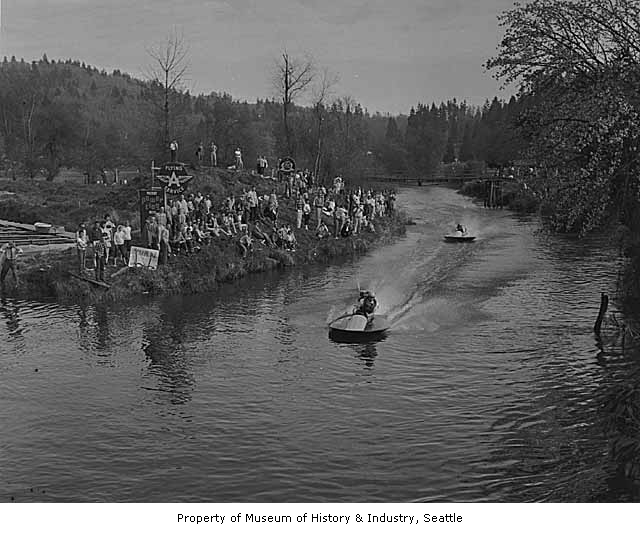
Race in Bothell
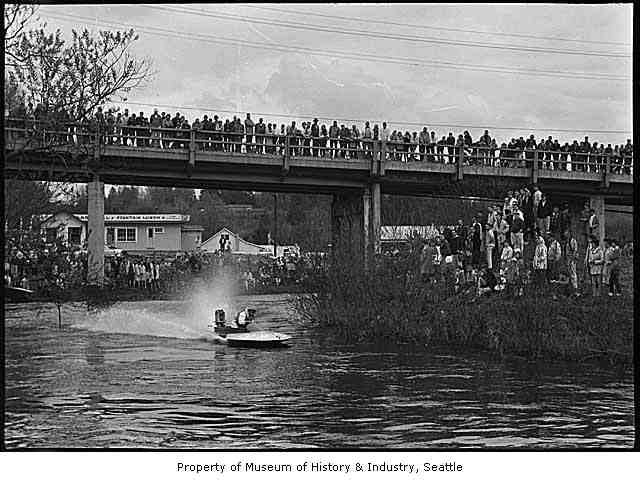
Race Under Bothell Bridge
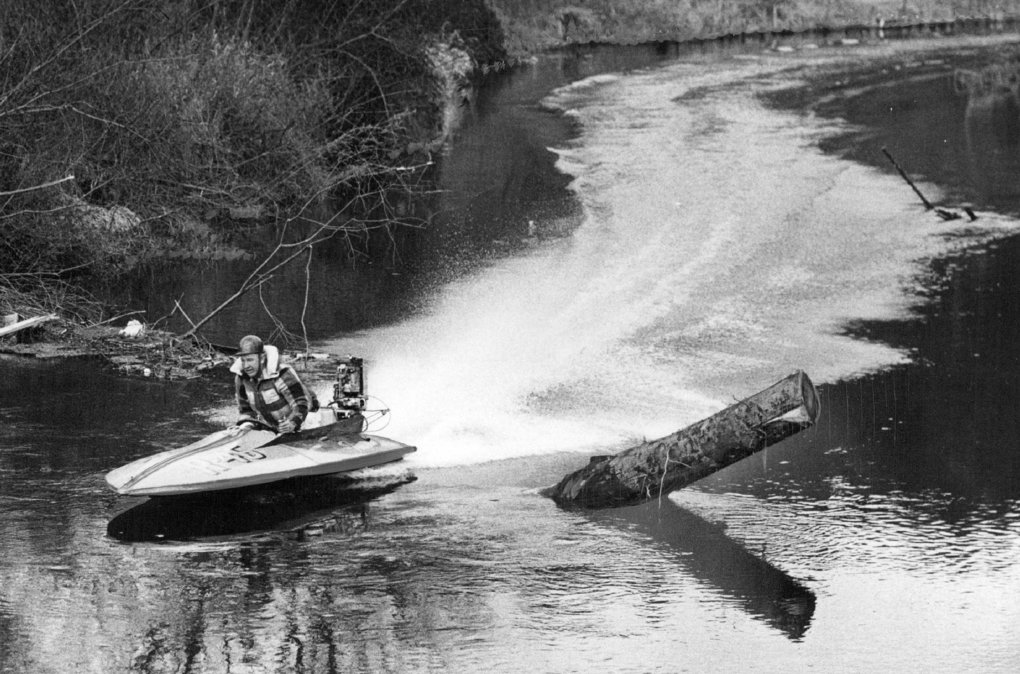
Race between the logs
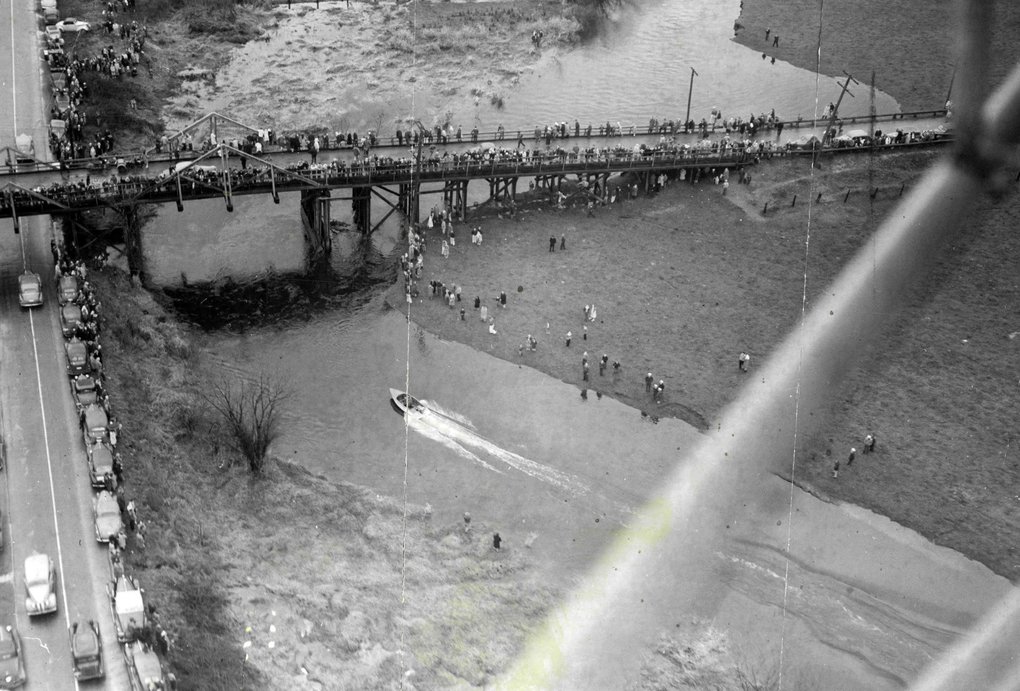
Race Under Earlier Bothell Bridge
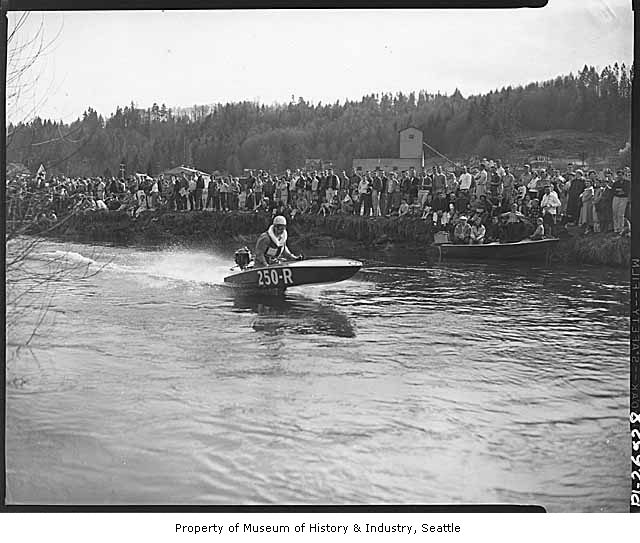
Race before Bothell Bridge
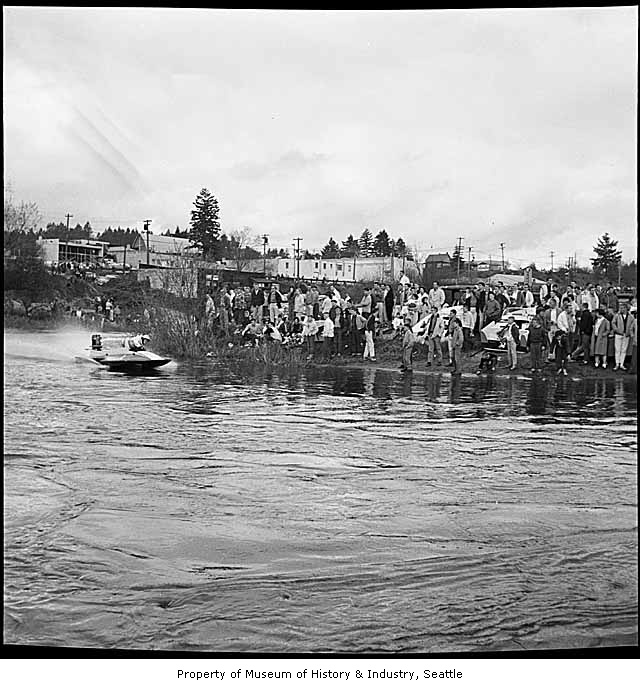
Race after Bothell Bridge


